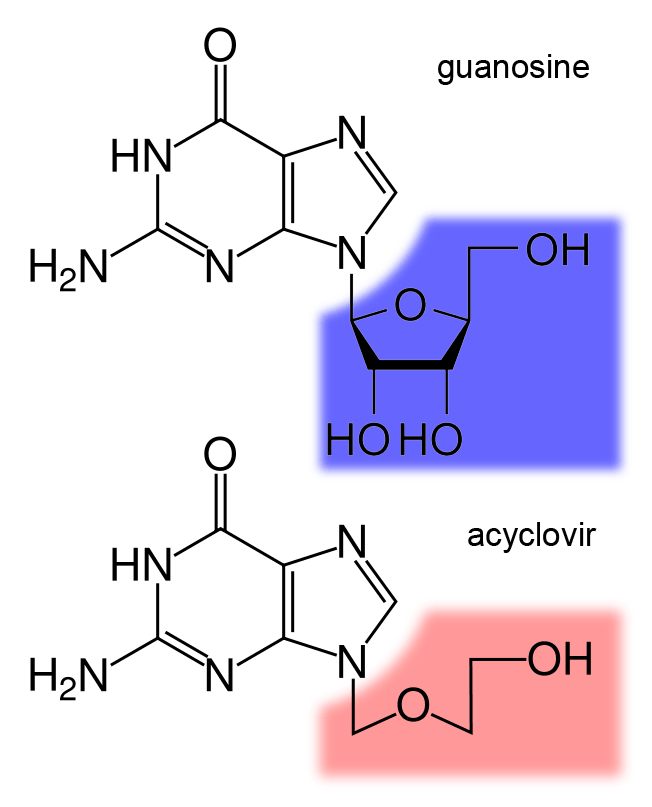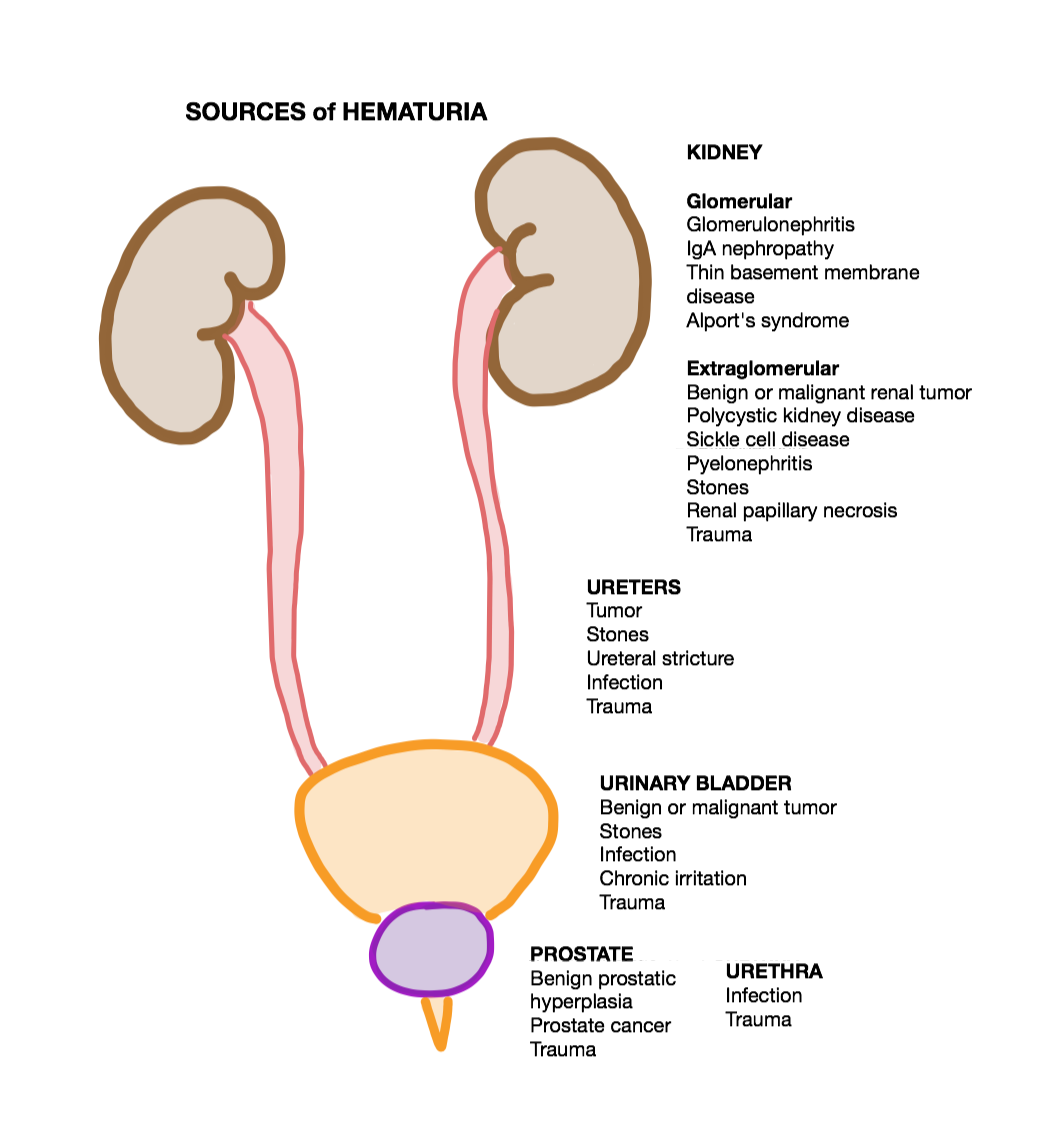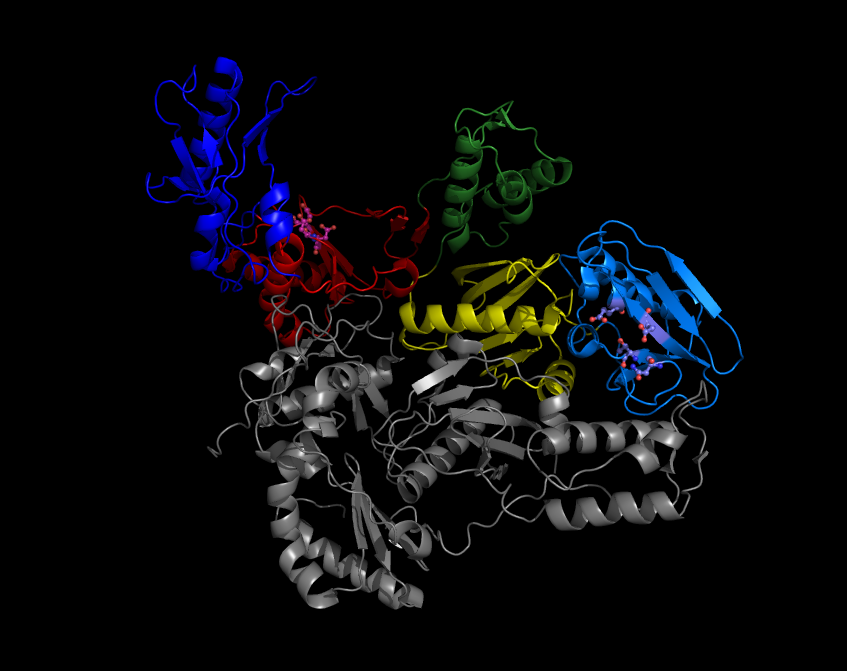|
Entecavir
Entecavir (ETV), sold under the brand name Baraclude, is an antiviral medication used in the treatment of hepatitis B virus (HBV) infection. In those with both HIV/AIDS and HBV antiretroviral medication should also be used. Entecavir is taken by mouth as a tablet or solution. Common side effects include headache, nausea, high blood sugar, and decreased kidney function. Severe side effects include enlargement of the liver, high blood lactate levels, and liver inflammation if the medication is stopped. While there appears to be no harm from use during pregnancy, this use has not been well studied. Entecavir is in the nucleoside reverse transcriptase inhibitors (NRTIs) family of medications. It prevents the hepatitis B virus from multiplying by blocking reverse transcriptase. Entecavir was approved for medical use in 2005. It is on the World Health Organization's List of Essential Medicines. Available as a generic medication in the United States. Medical uses Entecavir is mai ... [...More Info...] [...Related Items...] OR: [Wikipedia] [Google] [Baidu] |
Carbocyclic Nucleoside
Carbocyclic nucleosides (also referred to as carbanucleosides) are nucleoside analogues in which a methylene group has replaced the oxygen atom of the furanose ring. These analogues have the nucleobase attached at a simple alkyl carbon rather than being part of a hemiaminal ether linkage. As a result, they have increased chemical stability. They also have increased metabolic stability because they are unaffected by phosphorylases and hydrolases that cleave the glycosidic bond between the nucleobase and furanose ring of nucleosides. They retain many of the biological properties of the original nucleosides with respect to recognition by various enzymes and receptors. Carbocyclic nucleosides were originally limited to a five-membered ring system, matching the ring-size of the nucleosides; however, this term has been broadened to three-, four-, and six-membered rings. Natural products The 5-membered ring carbocyclic nucleosides aristeromycin, the analog of adenosine, and neplanocin ... [...More Info...] [...Related Items...] OR: [Wikipedia] [Google] [Baidu] |
Hepatitis
Hepatitis is inflammation of the liver parenchyma, liver tissue. Some people or animals with hepatitis have no symptoms, whereas others develop yellow discoloration of the skin and whites of the eyes (jaundice), Anorexia (symptom), poor appetite, vomiting, fatigue (medicine), tiredness, abdominal pain, and diarrhea. Hepatitis is ''acute (medicine), acute'' if it resolves within six months, and ''chronic condition, chronic'' if it lasts longer than six months. Acute hepatitis can self-limiting (biology), resolve on its own, progress to chronic hepatitis, or (rarely) result in acute liver failure. Chronic hepatitis may progress to scarring of the liver (cirrhosis), liver failure, and liver cancer. Hepatitis is most commonly caused by the virus ''hepatovirus A'', ''hepatitis B virus, B'', ''hepatitis C virus, C'', ''hepatitis D virus, D'', and ''hepatitis E virus, E''. Other Viral hepatitis, viruses can also cause liver inflammation, including cytomegalovirus, Epstein–Barr virus, ... [...More Info...] [...Related Items...] OR: [Wikipedia] [Google] [Baidu] |
WHO Model List Of Essential Medicines
The WHO Model List of Essential Medicines (aka Essential Medicines List or EML), published by the World Health Organization (WHO), contains the medications considered to be most effective and safe to meet the most important needs in a health system. The list is frequently used by countries to help develop their own local lists of essential medicines. , more than 155 countries have created national lists of essential medicines based on the World Health Organization's model list. This includes both developed and developing countries. The list is divided into core items and complementary items. The core items are deemed to be the most cost-effective options for key health problems and are usable with little additional health care resources. The complementary items either require additional infrastructure such as specially trained health care providers or diagnostic equipment or have a lower cost–benefit ratio. About 25% of items are in the complementary list. Some medica ... [...More Info...] [...Related Items...] OR: [Wikipedia] [Google] [Baidu] |
Nucleoside Reverse Transcriptase Inhibitors
Reverse-transcriptase inhibitors (RTIs) are a class of antiretroviral drugs used to treat HIV infection or AIDS, and in some cases hepatitis B. RTIs inhibit activity of reverse transcriptase, a viral DNA polymerase that is required for replication of HIV and other retroviruses. Mechanism of action When HIV infects a cell, reverse transcriptase copies the viral single stranded RNA genome into a double-stranded viral DNA. The viral DNA is then integrated into the host chromosomal DNA, which then allows host cellular processes, such as transcription and translation, to reproduce the virus. RTIs block reverse transcriptase's enzymatic function and prevent completion of synthesis of the double-stranded viral DNA, thus preventing HIV from multiplying. A similar process occurs with other types of viruses. The hepatitis B virus, for example, carries its genetic material in the form of DNA, and employs an RNA-dependent DNA polymerase to replicate. Some of the same compounds used as RTIs ... [...More Info...] [...Related Items...] OR: [Wikipedia] [Google] [Baidu] |
Oral Administration
Oral administration is a route of administration where a substance is taken through the mouth. Per os abbreviated to P.O. is sometimes used as a direction for medication to be taken orally. Many medications are taken orally because they are intended to have a systemic effect, reaching different parts of the body via the bloodstream, for example. Oral administration can be easier and less painful than other routes, such as injection. However, the onset of action is relatively low, and the effectiveness is reduced if it is not absorbed properly in the digestive system, or if it is broken down by digestive enzymes before it can reach the bloodstream. Some medications may cause gastrointestinal side effects, such as nausea or vomiting, when taken orally. Oral administration can also only be applied to conscious patients, and patients willing and able to swallow. Terminology ''Per os'' (; ''P.O.'') is an adverbial phrase meaning literally from Latin "through the mouth" or "by mouth ... [...More Info...] [...Related Items...] OR: [Wikipedia] [Google] [Baidu] |
Lipase
Lipase ( ) is a family of enzymes that catalyzes the hydrolysis of fats. Some lipases display broad substrate scope including esters of cholesterol, phospholipids, and of lipid-soluble vitamins and sphingomyelinases; however, these are usually treated separately from "conventional" lipases. Unlike esterases, which function in water, lipases "are activated only when adsorbed to an oil–water interface". Lipases perform essential roles in digestion, transport and processing of dietary lipids in most, if not all, organisms. Structure and catalytic mechanism Classically, lipases catalyse the hydrolysis of triglycerides: :triglyceride + H2O → fatty acid + diacylglycerol :diacylglycerol + H2O → fatty acid + monacylglycerol :monacylglycerol + H2O → fatty acid + glycerol Lipases are serine hydrolases, i.e. they function by transesterification generating an acyl serine intermediate. Most lipases act at a specific position on the glycerol backbone of a lipid subs ... [...More Info...] [...Related Items...] OR: [Wikipedia] [Google] [Baidu] |
Nucleoside Analog
Nucleoside analogues are nucleosides which contain a nucleic acid analogue and a sugar. Nucleotide analogs are nucleotides which contain a nucleic acid analogue, a sugar, and a phosphate group with one to three phosphates. Nucleoside and nucleotide analogues can be used in therapeutic drugs, including a range of antiviral products used to prevent viral replication in infected cells. The most commonly used is acyclovir, although its inclusion in this category is uncertain, because it acts as a nucleoside but contains no actual sugar, as the sugar ring is replaced by an open-chain structure. Nucleotide and nucleoside analogues can also be found naturally. Examples include ddhCTP (3ʹ-deoxy-3′,4ʹdidehydro-CTP) produced by the human antiviral protein viperin and sinefungin (a S-Adenosyl methionine analogue) produced by some ''Streptomyces''. Function These agents can be used against hepatitis B virus, hepatitis C virus, herpes simplex, and HIV. Once they are phosphorylated ... [...More Info...] [...Related Items...] OR: [Wikipedia] [Google] [Baidu] |
Pharmacotherapy
Pharmacotherapy is therapy using pharmaceutical drugs, as distinguished from therapy using surgery (surgical therapy), radiation (radiation therapy), movement ( physical therapy), or other modes. Among physicians, sometimes the term ''medical therapy'' refers specifically to pharmacotherapy as opposed to surgical or other therapy; for example, in oncology, medical oncology is thus distinguished from surgical oncology. Pharmacists are experts in pharmacotherapy and are responsible for ensuring the safe, appropriate, and economical use of pharmaceutical drugs. The skills required to function as a pharmacist require knowledge, training and experience in biomedical, pharmaceutical and clinical sciences. Pharmacology is the science that aims to continually improve pharmacotherapy. The pharmaceutical industry and academia use basic science, applied science, and translational science to create new pharmaceutical drugs. As pharmacotherapy specialists and pharmacists have responsi ... [...More Info...] [...Related Items...] OR: [Wikipedia] [Google] [Baidu] |
Analogue (chemical)
A structural analog (analogue in modern traditional English; Commonwealth English), also known as a chemical analog or simply an analog, is a compound having a structure similar to that of another compound, but differing from it in respect to a certain component. It can differ in one or more atoms, functional groups, or substructures, which are replaced with other atoms, groups, or substructures. A structural analog can be imagined to be formed, at least theoretically, from the other compound. Structural analogs are often isoelectronic. Despite a high chemical similarity, structural analogs are not necessarily functional analogs and can have very different physical, chemical, biochemical, or pharmacological properties. In drug discovery, either a large series of structural analogs of an initial lead compound are created and tested as part of a structure–activity relationship study or a database is screened for structural analogs of a lead compound. Chemical analogues of ille ... [...More Info...] [...Related Items...] OR: [Wikipedia] [Google] [Baidu] |
Deoxyguanosine
Deoxyguanosine is composed of the purine nucleobase guanine linked by its N9 nitrogen to the C1 carbon of deoxyribose. It is similar to guanosine, but with one hydroxyl group removed from the 2' position of the ribose sugar (making it deoxyribose). If a phosphate group is attached at the 5' position, it becomes deoxyguanosine monophosphate. Deoxyguanosine is one of the four deoxyribonucleosides that make up DNA. See also * 8-Oxo-2'-deoxyguanosine 8-Oxo-2'-deoxyguanosine (8-oxo-dG) is an oxidized derivative of deoxyguanosine. 8-Oxo-dG is one of the major products of DNA oxidation. Concentrations of 8-oxo-dG within a cell are a measurement of oxidative stress. In DNA Steady-state lev ... References Nucleosides Purines Hydroxymethyl compounds {{Biochemistry-stub ... [...More Info...] [...Related Items...] OR: [Wikipedia] [Google] [Baidu] |
Hematuria
Hematuria or haematuria is defined as the presence of blood or red blood cells in the urine. “Gross hematuria” occurs when urine appears red, brown, or tea-colored due to the presence of blood. Hematuria may also be subtle and only detectable with a microscope or laboratory test. Blood that enters and mixes with the urine can come from any location within the urinary system, including the kidney, ureter, urinary bladder, urethra, and in men, the prostate. Common causes of hematuria include urinary tract infection (UTI), kidney stones, viral illness, trauma, bladder cancer, and exercise. These causes are grouped into glomerular and non-glomerular causes, depending on the involvement of the glomerulus of the kidney. But not all red urine is hematuria. Other substances such as certain medications and foods (e.g. blackberries, beets, food dyes) can cause urine to appear red. Menstruation in women may also cause the appearance of hematuria and may result in a positive urine dip ... [...More Info...] [...Related Items...] OR: [Wikipedia] [Google] [Baidu] |
Reverse Transcription
A reverse transcriptase (RT) is an enzyme used to generate complementary DNA (cDNA) from an RNA template, a process termed reverse transcription. Reverse transcriptases are used by viruses such as HIV and hepatitis B to replicate their genomes, by retrotransposon mobile genetic elements to proliferate within the host genome, and by eukaryotic cells to extend the telomeres at the ends of their linear chromosomes. Contrary to a widely held belief, the process does not violate the flows of genetic information as described by the classical central dogma, as transfers of information from RNA to DNA are explicitly held possible. Retroviral RT has three sequential biochemical activities: RNA-dependent DNA polymerase activity, ribonuclease H (RNase H), and DNA-dependent DNA polymerase activity. Collectively, these activities enable the enzyme to convert single-stranded RNA into double-stranded cDNA. In retroviruses and retrotransposons, this cDNA can then integrate into the host ... [...More Info...] [...Related Items...] OR: [Wikipedia] [Google] [Baidu] |





